Hong Kong is renowned for its excellent transport network. But let’s not forget that in addition to Hong Kong Island, Kowloon and the New Territories, there are more than 200 islands in Hong Kong, as well as many places that are not reached by the road and railway networks. At Hactl, in fact, some of our staff live quite far away from our SuperTerminal 1 facility at Chek Lap Kok. Yet, despite the distance and challenges, these colleagues arrive for work on time, through their knowledge and ingenuity – like Wong Wah-hing (Wah Hing), a Peng Chau islander who drives his own boat to work; Chan Yau-shing (Yau Shing) from Cheung Chau who takes the earlier ferry in order to get to work on time; and Tse Chor-hung (Tse), a resident of Shenzhen who has to cross the Mainland China-Hong Kong border on his way to work.
When people look for a job, they are always concerned about the distance they must travel to work. But travelling three to four hours every day to and from the cargo terminal hasn’t stopped these three Hactl team members working for Hactl for between fifteen and forty years. So, what motivates them to make such a long journey to work? And what interesting stories can they tell about their daily journeys?

Wong Wah-hing (Wah Hing)
Peng Chau – Chek Lap Kok
Sailing my own boat
Visiting the ramp, it’s easy to spot a person with bright and piercing eyes, leading the Ground Services Team in the loading and unloading of aircraft. He is Wong Wah-hing (Wah Hing), who has been with Hactl for more than thirty years. As leader of the team, he has a very important role to play in organising the work of his team members, ensuring that the loading and unloading process complies with the relevant safety guidelines, and co-ordinating the needs of the crew.
Wah Hing is one of the few Hactl staff who live in Peng Chau. It’s not a long way from Peng Chau to the airport – in fact, Peng Chau and Discovery Bay on Lantau Island is connected by Kaito (a type of small ferry that operates in Hong Kong). You can then take two connecting buses from Discovery Bay to the airport; the whole process takes around an hour. However, the air cargo industry operates around the clock, and most front-line staff work in shifts. So for Wah Hing, it is a far from easy journey when he is working a night shift: “I occasionally get off work at one o’clock in the morning, when the Kaito has stopped operating. Then, I have to take a bus to the ferry pier in Central, and wait for the first ferry home – which is at three o’clock in the morning! It’s just too much trouble,” he adds: “After trying a few times to go home that way, I decided to use another method to commute.”

“I didn’t dare to venture out again to try and find my way home, so I stayed on the island all night and only discovered when dawn broke that Peng Chau was on the other side, and I was on Hei Ling Chau!”
The “other method” to which Wah Hing refers is driving himself! Peng Chau and Discovery Bay are not far apart, and a boat ride takes only about 10 minutes. When the sky is clear, you can see Hong Kong Disneyland from the boat. However, according to Wah Hing, in spring there is sometimes heavy sea fog, and he often cannot even see the stern of the boat. Nowadays, it is possible to rely on GPS (Global Positioning System) to check your whereabouts in heavy fog. But, in the past, Wah Hing had to rely on his experience, listening to the wind and observing the current to determine the boat’s heading. But there was still a chance of making a mistake, especially in the early hours of the morning when heading home: “One spring night ten years ago, I was sailing home. It was so foggy that I could hardly see anything, so I had to follow the route to Peng Chau from memory. It was only after I landed that I realised it wasn’t Peng Chau! I didn’t dare to venture out again to try and find my way home, so I stayed on the island all night and only discovered when dawn broke that Peng Chau was on the other side, and I was on Hei Ling Chau!”
Clearing the head
Despite the occasional unpredictability of the sea, Wah Hing enjoys sailing his boat. “I was born into an Aberdeen fishermen’s family, I’ve loved fishing and water sports since I was a kid, and I got my boat licence at twenty years of age. But I bought my first fishing boat and became its “Captain” only after moving to Peng Chau fifteen years ago,” he continues. “Sailing on the sea alone and looking at the beautiful scenery around me, the worries and stress of work are soon swept away. I play a leading role in the team, and maintaining a good mental attitude can definitely bring positive energy to my colleagues, and result in more work done with less effort.”
Sailing not only reduces the time taken to get to work, but also reduces the distance between people, Wah Hing continues: “My colleagues are very curious about my commuting, and it is easy to open the conversation with workmates. Even the younger generation are interested, asking for advice on how to get a boat licence. Some of them have successfully obtained the license and prepared themselves to become a ‘Captain’, too!” he adds proudly.
“In fact, sea fishing is a lot like his daily work, in the sense that it is a team effort, with everyone on board doing their own job and looking out for each other’s safety.”
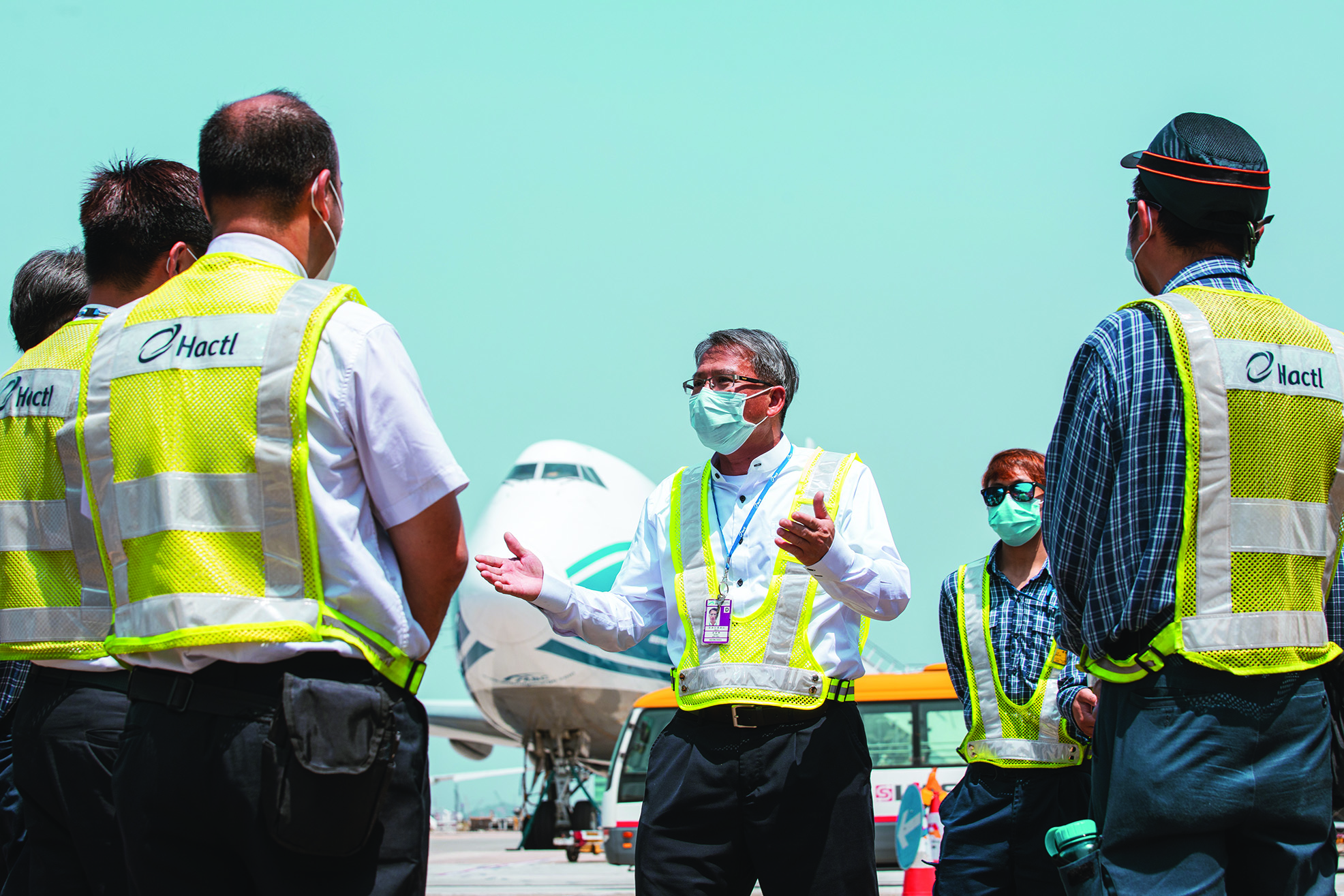
Those who do not know how to sail queue up to go fishing with Wah Hing: “In fact, sea fishing is a lot like his daily work, in the sense that it is a team effort, with everyone on board doing their own job and looking out for each other’s safety.” It is this team spirit within Hactl that makes everyone feel a sense of belonging in the company. So, despite the challenges of commuting, “This is my second home,” declares Wah Hing. “So how could I leave?” he finishes with a smile.
Cheung Chau – Chek Lap Kok
“Chan Yau-shing (Yau Shing)”
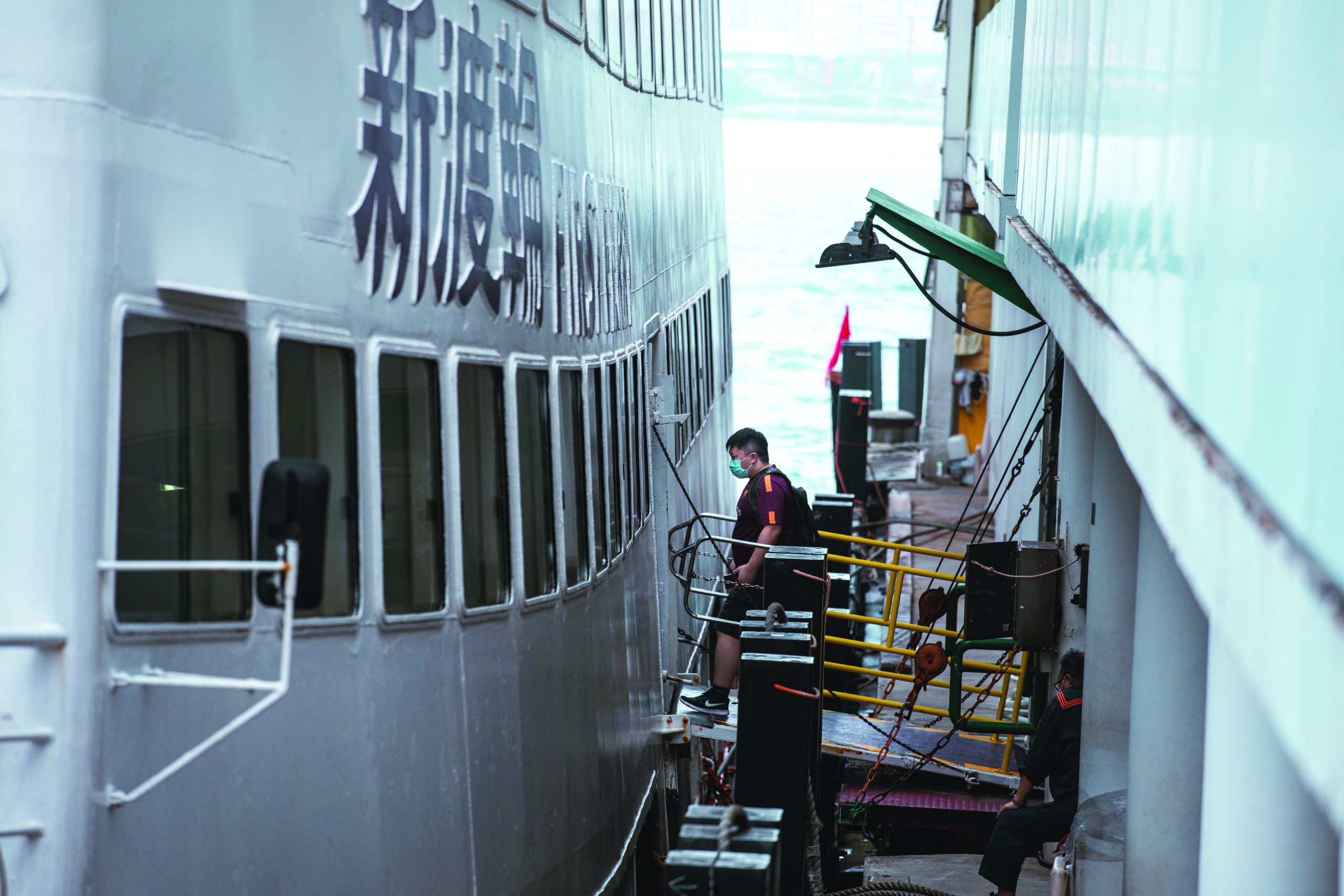
Better early than late
There are more “islanders” at the terminal than just Wah Hing; Chan Yau-shing (Yau Shing), works as an Operation Clerk for Hong Kong Air Cargo Services Limited (Hacis) – Hactl’s valued-added logistics subsidiary. Having grown up in Cheung Chau, Yau Shing has become accustomed to long boat rides, and they no longer bother him. “I used to spend three to four hours a day travelling to and from work in the city,” he says. Yau Shing now spends about two hours travelling to work at Hactl, taking the ferry from Cheung Chau Ferry Pier to Central, then the MTR to Tung Chung, and finally transferring to the terminal by bus. Although he spends more than four hours a day travelling, Yau Shing laughs and says it is not as hard as others imagine: “My situation is the same as other colleagues who take long-distance buses to work. Some people have breakfast or catch up on sleep when travelling, while I surf the internet with my mobile phone which makes good use of my time.”
Living next to Cheung Chau Tung Wan Beach, Yau Shing is a classic islander: since he was a child, he has travelled all over the island, swimming from its beaches and eventually even working as a part-time lifeguard for a while. When he grew up, he wanted to find a stable full-time job, so he looked outside the island – and, after being introduced by a friend, he joined Hactl where he has worked for the past sixteen years. “I chose to work here not only because of the promising future of the air cargo industry and the attractive benefits offered by the company, but also because of the pleasant working environment. Lantau Island (where Hactl is based) is an outlying island like Cheung Chau, so it's less oppressive than the busy urban areas, and gives me a sense of closeness.” Yau Shing says.
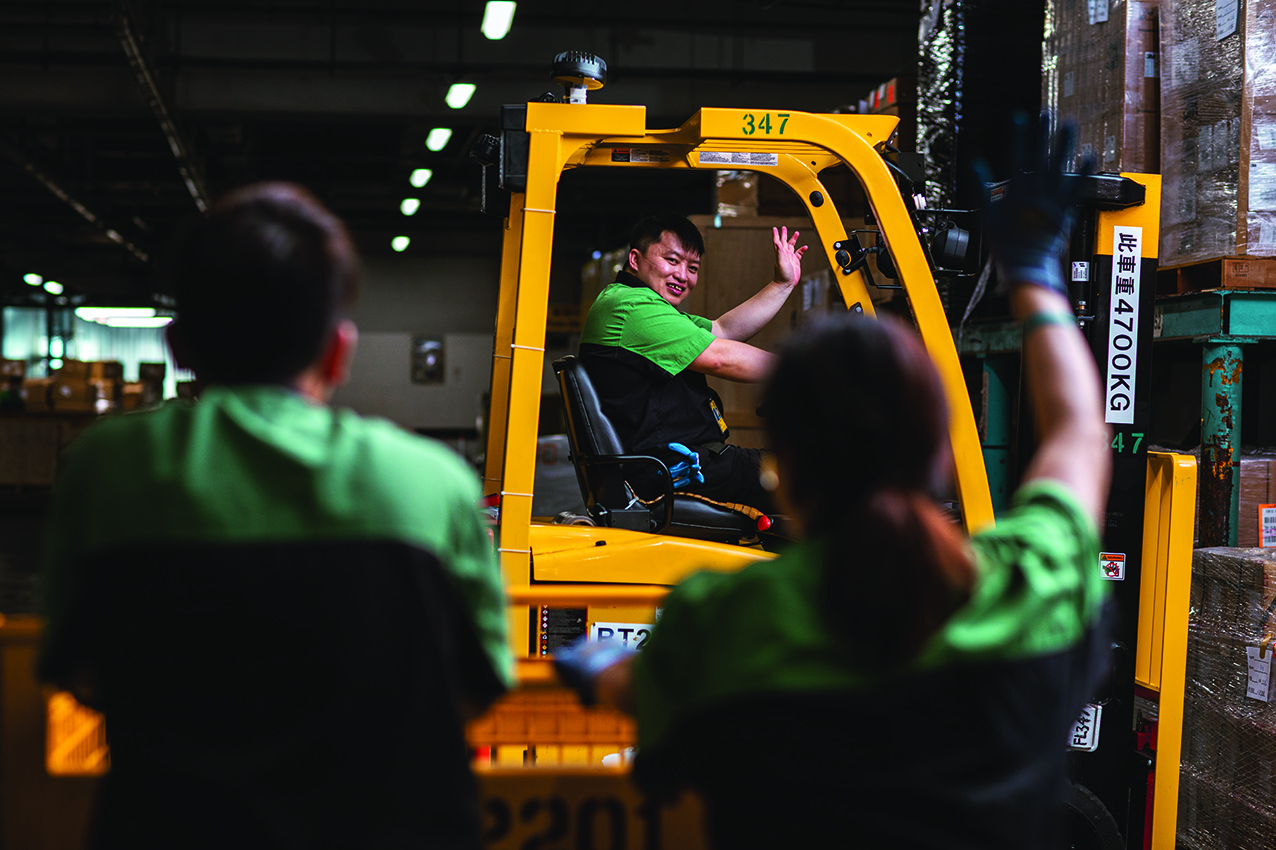
“I chose to work here not only because of the promising future of the air cargo industry and the attractive benefits offered by the company, but also because of the pleasant working environment. ”
Cheung Chau residents rely heavily on the ferry to get to and from the city, and it runs every half hour during peak times. Half an hour may not sound so bad but, for Yau Shing, a minute’s delay in the journey, or missing a particular ferry, can result in not making subsequent connections. He takes his job seriously and cannot stand being late for work, so prefers to arrive early.
If the work starts at 3:00 p.m., Yau Shing can catch the ferry at 1:00 p.m. and will theoretically be “just in time” for work. “But I would rather take the one departing at noon,” he says, “and return to the office at 2:00 p.m., instead of rushing back at the last minute. It’s too risky. I dare not chance my luck!”
Yau Shing explains that his job at Hacis involves keeping a close eye on the arrival times of flights and advising supervisors to arrange staff for handling the cargo. Sometimes he also has to help colleagues load and unload cargo, as well as checking on them. The late arrival of one person can disrupt the workflow of the whole team. He demonstrates his diligence, and old-school values when adding: “Although my colleagues understand that I live in Cheung Chau, as a member of the team I cannot be a burden to others all the time.”
“There was one time when I left work just before typhoon signal No. 8 was hoisted. I dashed to the ferry pier in Central, but the ferry was already out of service. I had to stay at the pier and wait for more than 10 hours.”
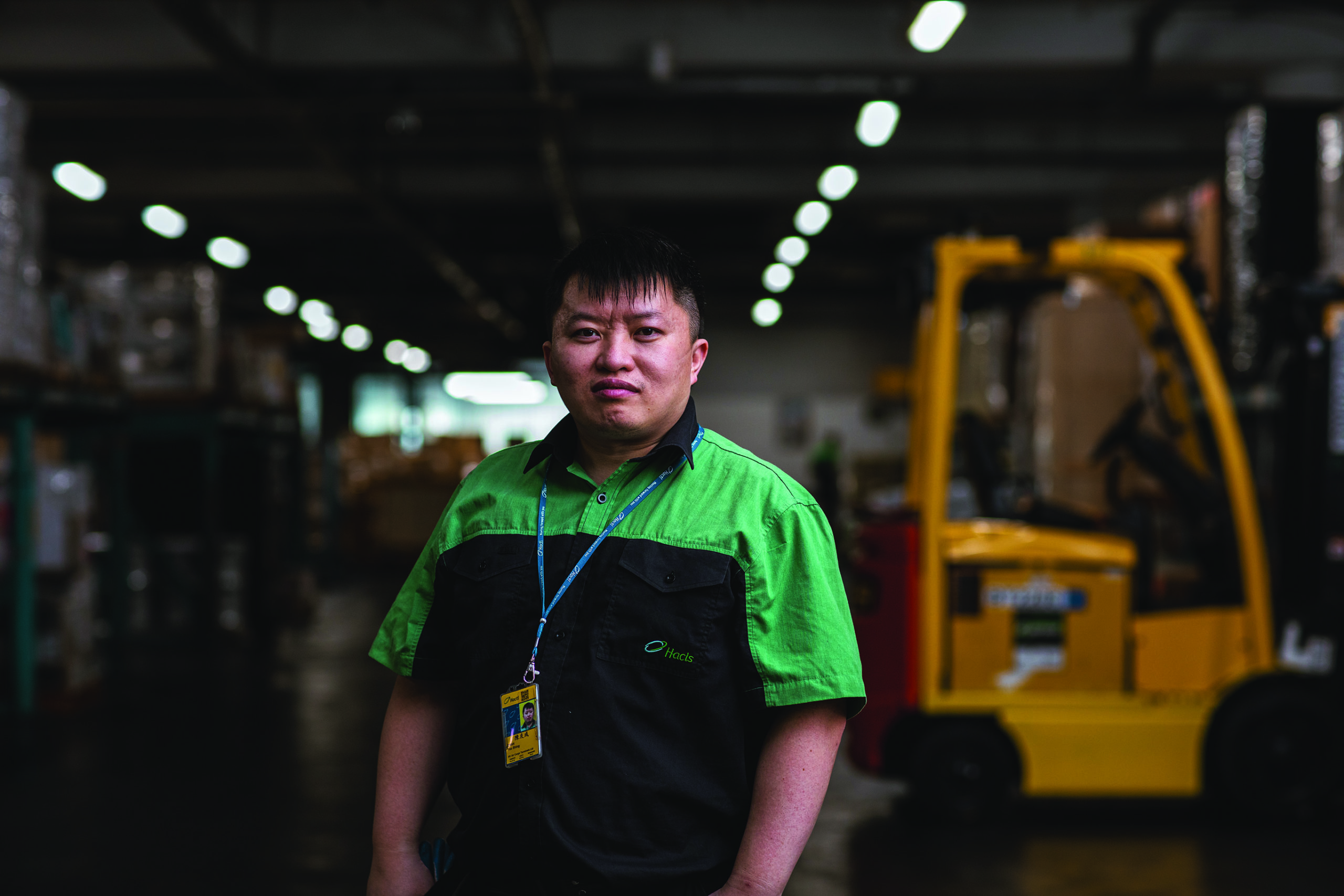
Typhoon journey
To the normal white-collar workers in the city, a typhoon is a matter of course in summer and simply implies one more day off work. But, to the outlying islanders, it is a nerve-wracking experience. When a typhoon hits Hong Kong on a working day, and the ferry service is suspended, Yau Shing becomes very frustrated: “I have to take a day off work and ask for a colleague to cover for me.” And when a typhoon strikes after work, the situation can be equally distressing: “There was one time when I left work just before typhoon signal No. 8 was hoisted. I dashed to the ferry pier in Central, but the ferry was already out of service. I had to stay at the pier and wait for more than 10 hours.” When the ferry finally resumed the next day, conscientious Yau Shing did not ask for permission to go home for a short break: “No – I didn’t want to bother anyone, I just went straight from the pier back to work as usual. In recent years, however, the company has been very considerate in allowing staff living on outlying islands to leave work earlier, to catch the ferry home before the hoisting of typhoon signal No. 8 by the Hong Kong Observatory,” Yau Shing says gratefully.
Shenzhen – Chek Lap Kok

Tse Chor-hung (Tse)
Cross-border commuter
Cheung Chau and Peng Chau may be a long way from Chek Lap Kok. But there are farther off places…such as Shenzhen.
Tse Chor-hung (Tse) has worked for Hactl for almost 40 years, and has lived far away from the airport ever since he joined the company. When Hactl was still based at the old Kai Tak Airport, he lived in Chai Wan on Hong Kong Island East, and then Yuen Long in New Territories West. After the terminal had moved to the new airport at Chek Lap Kok, he started a family in the year 2000 and settled down in Nanshan, Shenzhen, on the Chinese mainland. In the beginning, he divided his week living both in Shenzhen and Hong Kong. Then, when the Shenzhen Bay Port was opened close to his home in Shenzhen, he decided he would live full time in Shenzhen and cross the border to work in Hong Kong every day – which he has now been doing for two years.
There are many transport routes to and from the airport in Shenzhen, but the time taken by border controls varies from port to port. Working on the frontline, Tse has to work both early and late shifts – requiring him to carefully plan the best route and interchange point for each journey. Each route to work across the border involves at least three journey legs, he explains: “For the morning shift, I take a taxi to Huanggang Port, then a cross-boundary shuttle bus to enter Hong Kong, and then the airport bus to the terminal. For the night shift, after taking a taxi to Shenzhen Bay Port, I transfer by bus to Tin Shui Wai, and then the airport bus.” So how long does each journey take? “It takes about two and a half hours each way, taking into account the time spent on crossing the border and waiting for buses.”
“Back in February, they thought it would only take a few weeks or a month; but much to their surprise, this “temporary” stay in Hong Kong has now taken over a year!”

We’re shocked to hear that it takes two and a half hours to travel to work, but Tse does not seem unduly bothered: “I actually enjoy the time being alone on the bus, reading a book or surfing the internet, as well as watching the scenery along the way. Occasionally, when I see a plane passing overhead, I can’t help and look at my watch to figure out which airline is flying and where it’s going, which I think is a kind of ‘occupational hazard’,” laughs Tse. After having worked at Hactl for many years, he knows the schedule of flights to and from Hong Kong. Looking at the sky and reflecting takes Tse’s mind off the long journey.
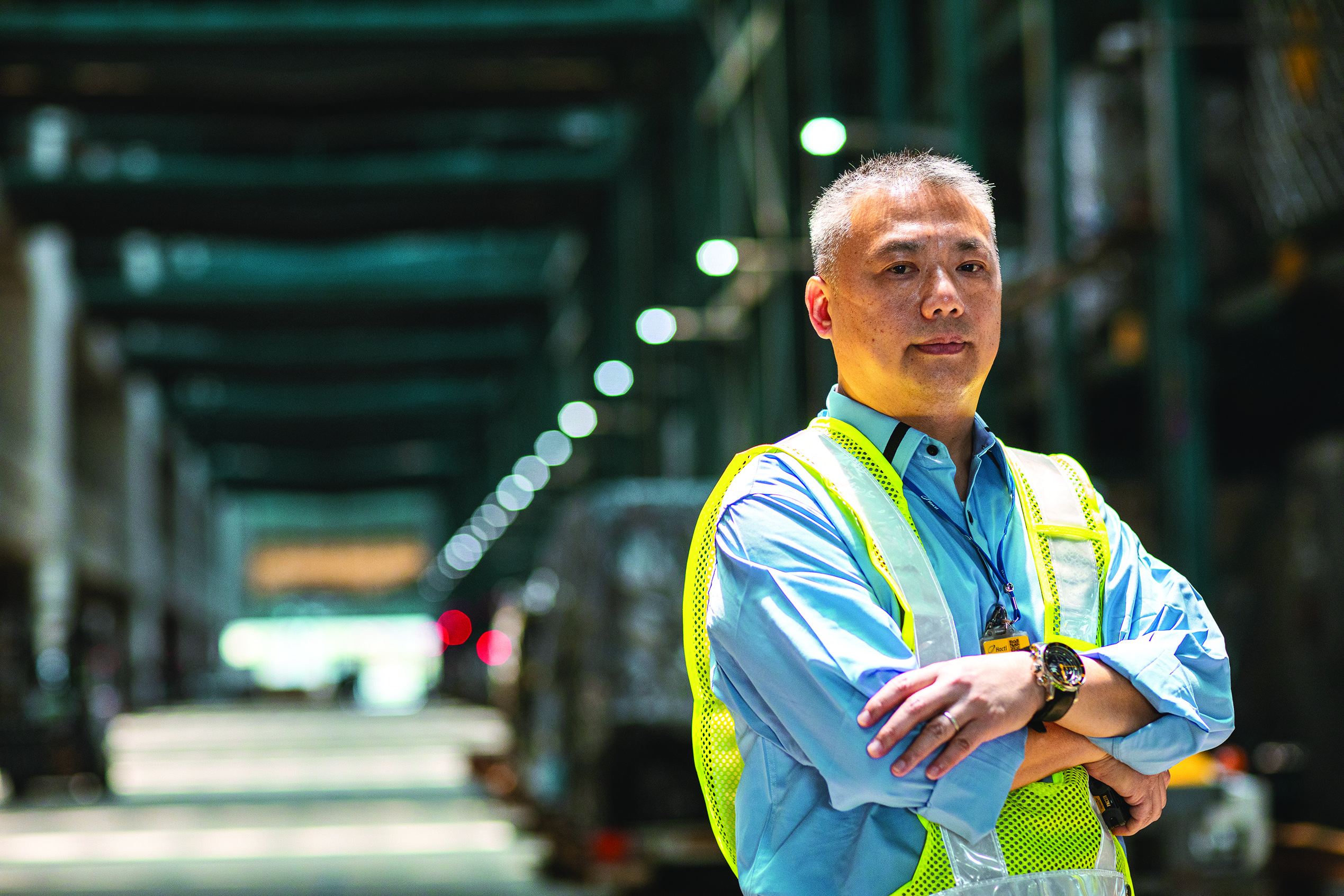
“The people around me are all my bosom buddies who have worked together for decades, and we share a strong brotherhood. ”
Temporary stay in Hong Kong under the pandemic for a year
The quarantine measures implemented in Shenzhen and Hong Kong during the pandemic have made working across the border an “impossible task” at present. So, at Hactl, a small number of colleagues living in Shenzhen have had to take a break from their families and move to Hong Kong on their own. In order to avoid being separated from his wife for a long period of time, Tse and she booked into a hotel in Hong Kong as early as the end of the Chinese New Year holidays in 2020. Back in February, they thought it would only take a few weeks or a month; but much to their surprise, this “temporary” stay in Hong Kong has now taken over a year! “When I returned to Hong Kong at the beginning of last year, my wife bought some winter clothes in an end-of-season sale, not knowing that I would need them this winter too. I was joking with my wife: ‘How amazing of you to have all our winter clothes ready last year!’” he says with a smile. “I’ve also heard that some colleagues coordinate their working schedules so that they can share a hotel room and save money.”
The daily commute of nearly five hours does not dampen Tse’s enthusiasm for his work. Nor does the temporary relocation and uncertainty of his return to living in Shenzhen as a result of the pandemic. “The people around me are all my bosom buddies who have worked together for decades, and we share a strong brotherhood. Also, Hactl is a very fair company, where hard work pay offs in the long run, and I have been fortunate enough to be promoted twice,” he continues, adding: “Although I have been in this position for many years and work with my colleagues to deliver cargo from the terminal to the apron on time every day, I often encounter new challenges, such as urgent deliveries to the aircraft, which require flexible deployment of manpower to complete the task. The great satisfaction of getting the job done is an experience that cannot be replaced. So however far I have to travel to work, I could not bear to leave the company.” That explains why Tse has been working at Hactl for forty years!

